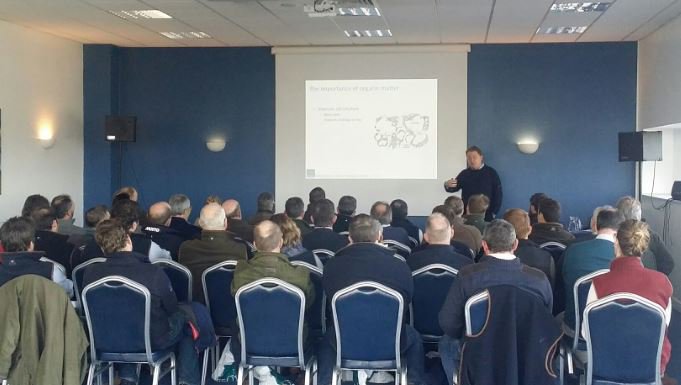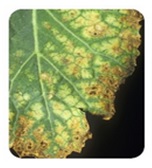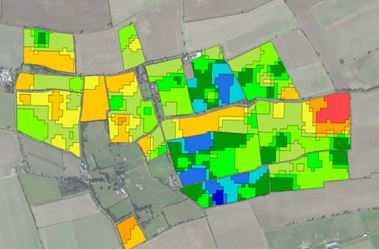Magnesium - the forgotten nutrient?
At our winter workshops, we discussed the importance of magnesium. It is essential for plant development and occurs naturally in soils across the UK. The amount of magnesium found is predominately dictated by the local geology and, to a lesser degree, soil texture. Fields located over dolomitic limestone will have much higher indices of magnesium when compared with fields over chalk or sand.
The nutrient management service offered by SOYL measures and spatially maps plant available phosphate, potassium, magnesium and pH.Typically in any one year, SOYL samples 250,000 ha and creates nutrient recommendations for over one million ha! Looking back over the sampling records the decline in magnesium levels is noticeable, especially considering that fields ten years ago were typically Index 2 and now they are likely to be Index 1.
What is the reason for the decline?
Unlike with phosphate and potash, plants don't need large quantities of magnesium. In fact, the RB209 advice is that potatoes and sugar beet are susceptible to deficiency on soils at Index 1 and other arable crops are susceptible to deficiency on soils at Index 0. Therefore, it is easy to understand why levels have declined. However, in the latest edition of the RB209, the advice is to monitor changes in magnesium and apply fertiliser when the soil declines to magnesium Index 1.
Why should I think about magnesium levels?
Magnesium deficiency, like any deficiency, leads to reduction in yield. It also leads to higher susceptibility to plant disease. Since magnesium is mobile within the plant, deficiency symptoms appear on lower and older leaves first. The first symptom is pale leaves which then develop an interveinal chlorosis. In some plants, reddish or purple spots will appear on the leaves.
Knowing the amount of magnesium in the soil is not only important for plant health but also in terms of other nutrient availability. High levels of magnesium can affect the availability of potash and conversely high levels of potash can affect the availability of magnesium. This can be particularly evident in the spring, where magnesium deficiency symptoms may appear after a fresh application of MOP.
In terms of soil pH, magnesium has a greater neutralising value in comparison to calcium. This means fields with a high magnesium index often report a good pH. It is important to consider this point when investigating poor yielding areas. The soil pH might well be good but the crop's underperformance might be caused by a calcium deficiency which has been overlooked.
Soils with high levels of magnesium are often described as being tight and sticky, making them difficult to manage. The cause of this is due to the magnesium in the soil pushing clay particles apart – during wet periods this allows water to get in making the soil sticky and in dry periods there is an increase in soil friction, making them tight. Adding more magnesium will only compound this situation and is a common mistake while trying to correct soil pH. A typical five t/ha application of dolomitic limestone will also add 750 kg/ha of MgO. Over time, this additional application of magnesium will only have reduced the soil workability.
With the changes in the RB209 and the important role magnesium plays, both in plants and the soil, utilising SOYL maps for cost effective nutrient management has become particularly important.
If you would like to know more about the SOYL nutrient service please don't hesitate to contact your SOYL area manager.
For specific advice for your business related to this blog or any other aspect of precision crop production get in touch with SOYL.
As a subscriber, you’ll receive email alerts each time a new blog is published so you can always stay updated with the latest advice and insights from our experts






Comments